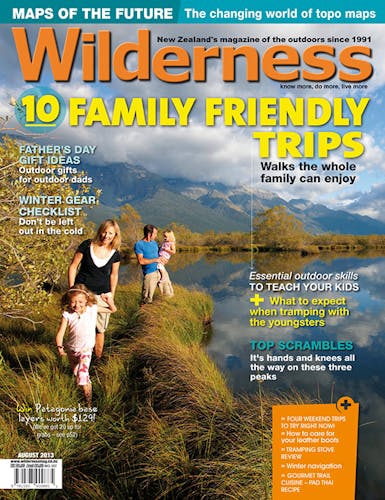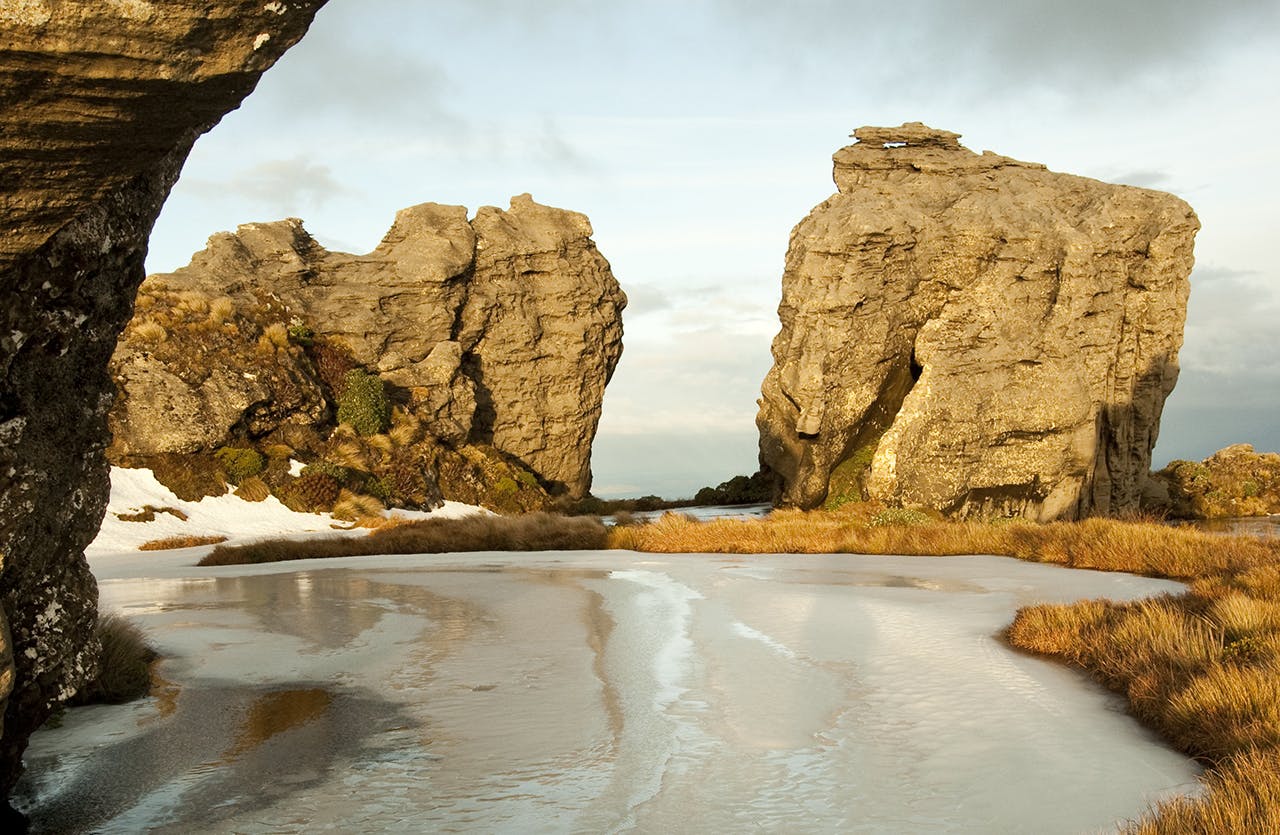Three places to see giant boulders eroded by millennia of weathering
I’m a sucker for a good rock formation. Tussock tops are nice, but give me a chess-set of seemingly megalithic boulders stacked on the ridgeline any day.
Hawke’s Bay, where I started tramping, doesn’t have many tors, but a stint living in Canterbury introduced me to perhaps New Zealand’s best collection: that of the Castle Hill basin. For a Lord of the Rings nut, this limestone landscape spoke of fantastical other-worldly places, and for a few months I stopped tramping and became obsessed with trying to master the strange friction climbing offered by this eccentric collection of limestone tors and boulders. I failed to get much past a grade 20, and – aged 21 – had to forever forgo the dream of climbing a grade matching my own age. But I did produce my thesis on climbing in the area.
So what is a tor? The Wikipedia definition goes: ‘A tor is a large, free-standing residual mass (rock outcrop) that rises abruptly from the surrounding smooth and gentle slopes of a rounded hill summit or ridge crest.’ So, do the marvellously random lava columns of the Oturere Valley in Tongariro National Park count? No; according to Wikipedia, tors are a type of rock formation created by weathering of the landscape. Seemingly, it’s the long weathering from rain, frost-thaw action, glaciation, or chemical defoliation over millions of years that gives a tor its defining character. Once the softer surrounding substrate weathers away, the remaining erosion-resistant rock may form tors.
Tors can result from any type of rock but the particular geological characteristics of each lend themselves to different sorts of weathering. Soft limestone, being more soluble in slightly acidic rainwater, can weather into curiously strange shapes, like those at Castle Hill.
The term ‘tor’ derives from the Welsh language, which also gave us the useful word ‘crag’. In other parts of the UK, such as Dartmoor and Cornwall, tor is also applied to the names of the hills themselves. There are few New Zealand places with the name tor; all in the South Island bar Auckland’s The Tor (on a rocky promontory at Torbay). Nelson, the West Coast, Otago and Southland have one each. However, none of these are top tor destinations compared with the three below.
Bream Head Scenic Reserve, Northland
Bream Head, at the mouth of Whangarei Harbour, has some of Northland’s most spectacular landscapes, with basalt tors rising out of semi-tropical rainforest. The excellent Te Whara Track follows the ridge crest from Ocean Beach to Urquharts Bay, passing a series of tors en route. Those wanting an overnight stay in the area can book Peach Cove Hut, set in an idyllic, pohutukawa-fringed bay. Bream Head/Te Whara has the highest tor, while climbers will find challenges on The Gorilla, and there’s also a fine rock spike called the Old Woman, visible from the historic Second World War radar base.
Castle Hill, Kura Tawhiti Conservation Area, Canterbury
For my money, Castle Hill boasts the country’s best set of tors, although I’m willing to be corrected. My topographical knowledge of central Otago’s great block ranges is severely lacking, and I know there are fine schist tors in places like the aptly named Rock and Pillar Range. But for sheer diversity of shape and form, the water-sculpted limestone tors of Castle Hill can’t be beaten. Wander around the place with your camera, take your rock shoes and a bouldering mat, or simply admire the athletics of rock climbers scaling the higher tors.
Lying in a large basin surrounded by mountains, with the Torlesse Range on one side and the Craigieburn on the other, Castle Hill often experiences a rain-shadow effect, so remains sunny when the Canterbury Plains are socked in by cloud, or Arthur’s Pass is getting hammered by a nor’ wester.
Hump Ridge, Fiordland National Park
Undoubtedly the highlight for anyone walking Southland’s Hump Ridge Track is the granite tors above Okaka Hut. A 30-minute boardwalk loop track wends among the tors and tarns of these tops, but on a good day you may want to wander further north, where more rock outcrops litter the landscape. There’s one tor that resembles an Easter Island statue, visible from the boardwalk just above Okaka Hut, while others impress simply by their sheer size.








